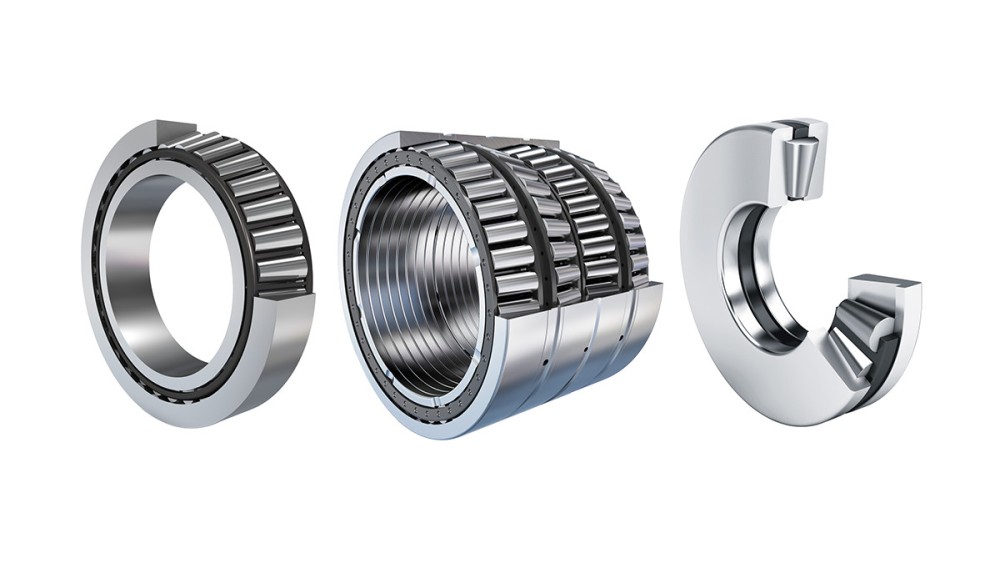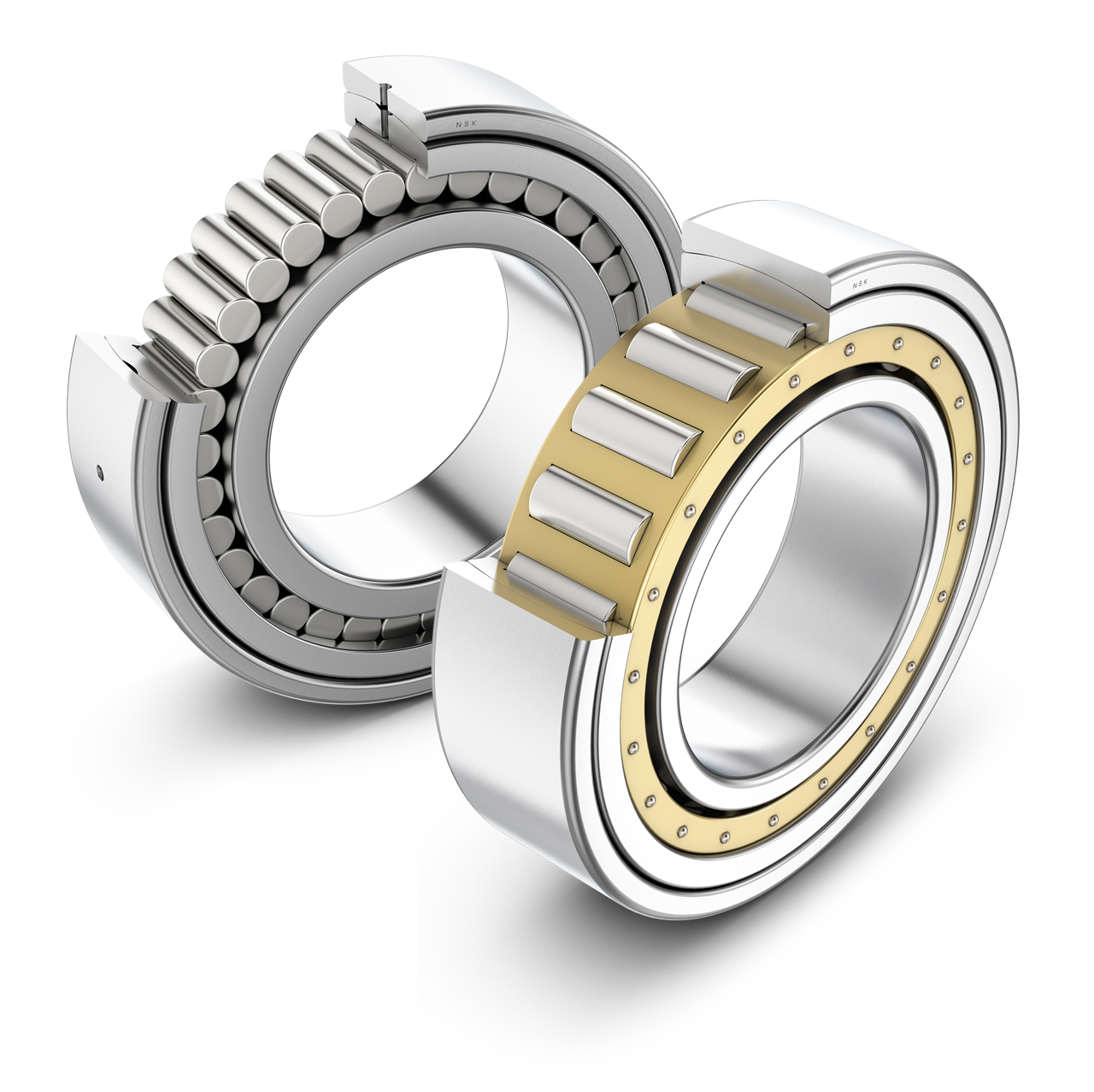Can you Explain the Concept of Bearing Clearance in Tapered Roller Bearings?
Bearing clearance, also known as internal clearance, refers to the space or gap between the various components of a tapered roller bearing when it is not under load. This clearance exists to accommodate the thermal expansion of the bearing components, ensure proper lubrication, and prevent excessive interference during operation. Here’s how bearing clearance works in tapered roller bearings:
- Thermal Expansion:
As tapered roller bearings operate, they generate heat due to friction and loading. This heat causes the bearing components, including the inner and outer rings, rollers, and cage, to expand. Bearing clearance provides the necessary space for these components to expand without causing binding or excessive load on the rolling elements.
- Lubrication Film:
The lubricant within the bearing forms a thin film between the rolling elements and raceways. Bearing clearance ensures that the rolling elements can move smoothly within this lubrication film, reducing friction and wear.
- Operating Conditions:
Bearing clearance affects the behavior of the bearing under different operating conditions. Excessive clearance can lead to vibration, noise, and reduced load-carrying capacity, while insufficient clearance may result in increased friction, heat generation, and premature failure.
- Types of Clearance:
Tapered roller bearings can have various types of clearance, including radial clearance (between the rollers and raceways) and axial clearance (along the bearing axis). The choice of clearance depends on the application’s requirements and the desired balance between load capacity and internal stress.
- Preload vs. Clearance:
Preload, which is the application of a controlled axial force, eliminates internal clearance and optimizes the distribution of load between rolling elements. In contrast, bearing clearance provides the necessary space for thermal expansion and lubrication, albeit at the cost of increased play.
- Application-Specific Considerations:
The optimal bearing clearance varies depending on factors such as the application’s operating temperature, speed, and load magnitude. Engineers carefully select the appropriate clearance to ensure optimal bearing performance.
- Measuring Clearance:
Bearing clearance can be measured using specialized instruments or techniques that assess the gap between components when the bearing is not under load.
Proper bearing clearance is crucial to maintaining optimal performance, minimizing wear, and preventing premature failure in tapered roller bearings. It is a critical factor that engineers consider when selecting and designing bearings for specific applications.
What are the potential challenges or limitations of using cylindrical roller bearings in specific industries?
While cylindrical roller bearings offer numerous advantages, there are also certain challenges and limitations associated with their use in specific industries. Let’s explore some of these potential challenges:
- High-Speed Applications:
In industries that require high-speed rotating machinery, such as machine tools or centrifugal compressors, the limitations of cylindrical roller bearings become more pronounced. At high speeds, factors like centrifugal forces, increased operating temperatures, and the potential for roller skidding can impact the bearing’s performance. Special design considerations, such as optimized cage designs, precision manufacturing, and proper lubrication, are necessary to overcome these challenges and ensure reliable operation at high speeds.
- High-Temperature Environments:
In industries like steel production, glass manufacturing, or certain types of furnaces, the operating temperatures can exceed the limits of standard cylindrical roller bearings. High temperatures can cause dimensional changes, affect the lubricant properties, and lead to accelerated wear or premature failure of the bearing components. To address this limitation, specialized high-temperature bearings with heat-resistant materials, advanced lubrication systems, and appropriate sealing mechanisms are required.
- Heavy Load and Shock Loads:
Industries involving heavy machinery, such as construction, mining, or material handling, often subject cylindrical roller bearings to extremely heavy loads or sudden shock loads. These conditions can lead to increased stress, fatigue, or even permanent deformation of the bearing components. To overcome these challenges, bearings with higher load-carrying capacities, robust designs, and enhanced fatigue resistance are necessary. Additionally, proper maintenance practices and regular monitoring are crucial to detect any signs of excessive load or potential failure.
- Contamination and Harsh Environments:
In industries characterized by harsh operating environments, such as agriculture, forestry, or automotive manufacturing, cylindrical roller bearings can face challenges related to contamination, moisture, or exposure to abrasive particles. Contaminants can accelerate wear, cause damage to the bearing surfaces, or impair the lubrication effectiveness. Sealing solutions, effective maintenance practices, and the selection of appropriate bearing materials are essential to mitigate these challenges and ensure reliable performance in such environments.
- Space Limitations:
In certain industries like aerospace or robotics, where space is limited and compact designs are required, the size and dimensions of cylindrical roller bearings can pose challenges. Finding suitable bearing sizes that meet the specific space constraints while still fulfilling the load and performance requirements can be a limitation. In such cases, alternative bearing types or customized bearing solutions may be explored to overcome the space limitations.
It’s important to note that while there may be challenges or limitations associated with using cylindrical roller bearings in specific industries, advancements in bearing technology, materials, and design continue to address and overcome many of these limitations. Consulting with bearing manufacturers, considering application-specific requirements, and implementing appropriate maintenance practices can help mitigate these challenges and ensure the successful use of cylindrical roller bearings in a wide range of industries.
What are cylindrical roller bearings, and how are they used in machinery?
Cylindrical roller bearings are a type of rolling element bearing that consists of cylindrical rollers held in place by a cage. They are designed to provide high radial load-carrying capacity and moderate thrust load-carrying capacity. Cylindrical roller bearings have a relatively high stiffness and can accommodate axial displacement between the inner and outer rings.
These bearings are commonly used in various machinery applications due to their specific characteristics and advantages:
- Radial Load Capacity:
Cylindrical roller bearings can withstand high radial loads, making them suitable for applications where the primary load is radial in nature. The cylindrical rollers distribute the load evenly along their length, reducing stress concentrations and improving load-carrying capacity. This characteristic allows cylindrical roller bearings to support heavy machinery components and handle substantial radial forces.
- Thrust Load Capacity:
While primarily designed for radial loads, cylindrical roller bearings can also accommodate moderate axial loads. The arrangement of the cylindrical rollers and their contact angle with the raceways enables these bearings to handle limited thrust loads. However, for applications with predominantly axial loads, other types of bearings, such as thrust bearings, may be more suitable.
- Design Variations:
Cylindrical roller bearings come in various design variations to meet specific application requirements. These variations include different cage designs, such as solid cages or cages made of polymer materials, which offer benefits such as reduced friction and improved lubrication. Additionally, cylindrical roller bearings can have different configurations of the inner and outer ring flanges, such as separable or integral designs, to facilitate installation and maintenance.
- High-Speed Capability:
Cylindrical roller bearings can operate at high speeds, depending on their design and internal clearance. Factors such as cage material, roller design, and lubrication play a role in determining the maximum allowable speed. Manufacturers provide speed ratings and guidelines to ensure proper selection and operation of cylindrical roller bearings within their speed limits.
- Application Versatility:
Cylindrical roller bearings find wide applications in various machinery and equipment. They are commonly used in rotating machinery, such as electric motors, gearboxes, pumps, and compressors. Cylindrical roller bearings are also utilized in industries such as automotive, aerospace, construction, and mining, where they support heavy loads and provide rotational motion in critical components.
- Alignment and Compensation:
Cylindrical roller bearings have the ability to accommodate slight misalignments between the inner and outer rings. This feature allows for easier installation and helps compensate for mounting errors or shaft deflections during operation. The axial displacement capability of cylindrical roller bearings can also assist in thermal expansion or contraction of the shaft and housing.
In summary, cylindrical roller bearings are a type of rolling element bearing that provides high radial load-carrying capacity and moderate thrust load-carrying capacity. They are used in machinery applications where heavy radial loads need to be supported. With their versatility, high-speed capability, and ability to accommodate misalignment, cylindrical roller bearings contribute to the efficient and reliable operation of various types of machinery.
editor by CX 2024-05-16




